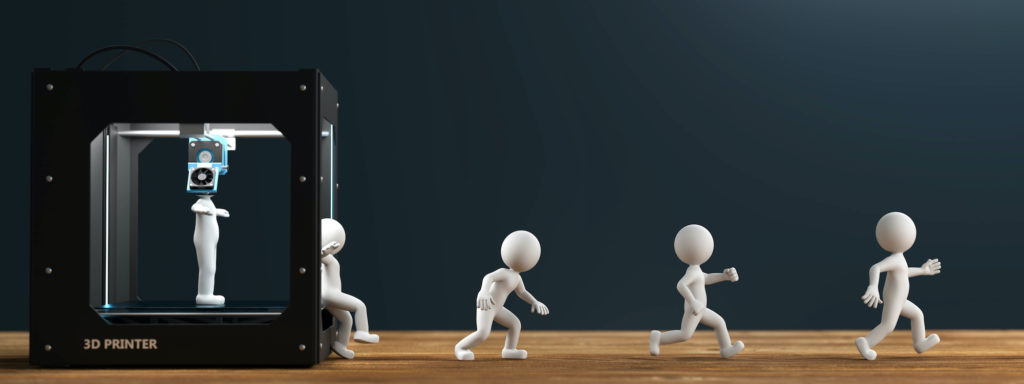So you’re interested in starting a new product development project…Read this first!
Take me straight to the reasons
Most of us have been there at some point – when a flash of inspiration occurs and you get an idea for that new product. The one that fills a market gap perfectly and is a huge opportunity if you can get it right.
But if you’ve gone beyond the initial idea stage before you’ll know there’s a bit more to it than that first thought or conversation, even more so if your product is electronic or a custom IoT product.
On the road from discovery through to the ultimate goal for most product teams – manufacture at scale – there are a number of things that can derail a project, no matter how promising the initial concept. Whether that is at the planning phase or further along where changes to scope and form can be costly, hitting a barrier at any point is not ideal.

Luckily for you, we have many, many years of doing just that; taking an idea from the first conversation all the way through to manufacture. So through experience and lots of learning along the way, we’ve honed our design process over time and are pretty good at avoiding the pitfalls.
So, if you’re considering a new product development project, we’ve listed some of the key reasons projects don’t make it to the end of the road and how you can avoid them:
1. Not getting your budget correct
It may be obvious to state this but designing and developing a new product takes a considered capital investment. Manufacturing one at scale even more so. Once you’ve identified a gap in the market and have a concept you think answers it, you next need to do your sums to work out your budget and ultimately the cost/benefit analysis for your business. That means knowing not just the development costs, but ideally ongoing capex and opex plus what you can realistically drive in terms of revenue (which ultimately means also knowing the perceived value of the product to the end user and any competitive benchmarking).
For startups, we know it’s often a challenge to determine how much is needed in terms of investment funding, or even where to start with raising capital. The clearest piece of advice we can give here is, to consider the technical risks on the project and build a budget and plan that seeks to mitigate the risks early in the product development program. An understanding that design iterations will be required to refine the product will also ensure that the project budget is sufficient to enable the project to succeed.
With any project, you don’t know what you don’t know. And whilst many design companies can help highlight areas in discovery sessions, it’s never a bad thing to be prepared, both financially and mentally, that you may need to change your path based on internal or external factors.
2. Misunderstanding product/market fit (or a lack of one!)
This one can come in many forms, for example if your product idea is for a medical IoT device you likely need to be across specific standards and certifications the finished product must to pass in order to clear regulatory hurdles and gain access to the market. Or if you’re building an IoT performance tracker for cyclists is it a key driver to make sure it doesn’t add too much weight for them to be competitive?
Our advice here? Research, research and more research! Great research is a strong foundation for any project and that’s even truer when you’re designing a new product from scratch. Build your knowledge base by speaking to industry leaders and people who work in your chosen market, by conducting focus groups and by reading as much as you can around the topic. Really understand (through quantitative and qualitative research), who your target market is, what their drivers are, how your product solves a problem/provides a benefit and what their potential objections might be.

3. Taking too long! It’s a race, so run at it
Let us refer to the genius of Theodore Roosevelt here:
“In any moment of decision, the best thing you can do is the right thing, the next best thing is the wrong thing, and the worst thing you can do is nothing.”
Often in new product development, you’re not the only horse in the race and someone has had a similar idea to you. And we’ve all seen where the second or third product to market may be functionally far better than the first, but by the time that second product has launched they’re already being lapped by the competition. That’s a difficult point to come back from, plus when timelines expand, more often than not so does the budget. Or if you’re working with consultants and contractors, scheduling of resources can become a challenge, so there are multiple reasons why staying on your timeline can be important.
So once you have your budget and your product/market fit, set out a plan and work to it. Whether you are using agile methodologies or another process, a clear roadmap with defined accountability for each key phase and task is a great start.
4. Prioritising form over function and using ‘every crayon in the box’
Whilst we understand that physical appearance is important and we want things to be beautiful inside and out – the majority of the time they also have to work. So throughout the process, it’s a good idea to keep referring back to your business case and any initial workshop sessions.

5. Missing the manufacturing piece of the puzzle
It sounds obvious, but plan for the manufacturing process as well. You’ve done all the work to get there so you don’t want to fall at the final hurdle. Often it’s at this point that products have problems, when the design doesn’t pass manufacturing readiness tests. This test looks at the design, cost, process capability, materials availability, QA plan and test plan and if a product is too expensive to produce or the design doesn’t work at scale, it won’t pass. The other side of that coin is where manufacturing comes back as too expensive or timelines are too long to meet the in-market deadline.
So have a timeline and cost set up for manufacturing and do research over the best manufacturer for your kind of product. Or depending on the type of project, your product development team may offer turnkey services where they handle not only the new product development but the manufacture too.


